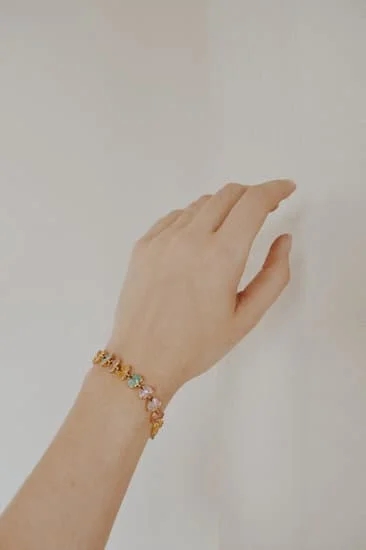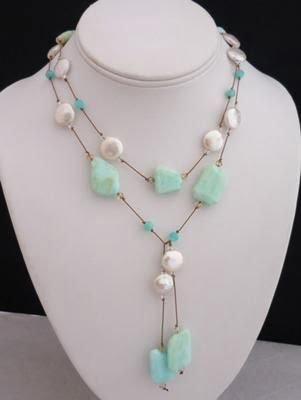The history of Italian jewelry making is rich and storied, with a tradition that dates back centuries. From ancient Etruscan and Roman influences to the artistic splendor of the Renaissance, Italian jewelry has long been admired for its craftsmanship and beauty. This introduction will provide an overview of the evolution of Italian jewelry making, exploring its roots, influence on art movements, and regional styles.
Ancient Italy was a thriving center for jewelry production, with Etruscan and Roman artisans creating intricate pieces that still inspire designers today. The Renaissance period saw a flourishing of creativity in all forms of art, including jewelry making, with iconic figures such as Michelangelo and Leonardo da Vinci influencing the design aesthetics of the time. As Italy continued to evolve culturally and artistically through the Baroque and Rococo periods, so too did its jewelry making techniques and styles.
The 19th century marked a revival of Italian craftsmanship, as artisans rediscovered traditional methods while also embracing new innovations. In the modern era, Italian jewelry has continued to push boundaries with innovative designs and cutting-edge techniques. Throughout this article, we will delve into the unique regional styles that have emerged from different parts of Italy, as well as examine how Italian jewelry continues to shape the global industry today.
Ancient Roots
Italian jewelry making has a rich and ancient history that can be traced back to the Etruscan and Roman periods. The craftsmanship and artistry of these early civilizations have greatly influenced Italian jewelry making, leaving a lasting legacy that can still be seen in contemporary designs.
Etruscan Influence
The Etruscans were skilled artisans who excelled in working with gold, silver, and other precious metals. Their jewelry was characterized by intricate designs featuring granulation, filigree work, and colorful gemstones. These techniques continue to be celebrated in modern Italian jewelry making, with many designers drawing inspiration from the delicate and intricate styles of the Etruscans.
Roman Influence
Following the Etruscan period, the Romans further developed their own unique style of jewelry making. They were known for their use of cameos, intaglios, and colored glass as well as their mastery of metalworking techniques such as soldering and engraving. Roman jewelry was often opulent and extravagant, reflecting the power and wealth of the empire. This influence can still be seen in Italian jewelry today, with many designers incorporating elements of Roman design into their pieces.
The influence of both the Etruscans and Romans on Italian jewelry making is undeniable. Their legacy lives on in the craftsmanship, techniques, and style that continue to define Italian jewelry to this day. From delicate gold filigree work to bold statement pieces adorned with colorful gemstones, the ancient roots of Italian jewelry making continue to inspire contemporary designs that are celebrated around the world.
Renaissance Splendor
During the Renaissance period, Italian jewelry making reached new heights of splendor and craftsmanship. This era, also known as the Age of Michelangelo and Leonardo da Vinci, was characterized by a revival of interest in the art and culture of ancient Greece and Rome, which had a significant influence on Italian jewelry design.
The Renaissance saw a shift towards more intricate and detailed jewelry pieces, with an emphasis on incorporating symbolism and personal meaning into each creation. Goldsmiths and jewelers during this time were highly skilled artisans who utilized innovative techniques to create breathtaking pieces that reflected the wealth and status of their patrons.
One notable characteristic of Renaissance jewelry was the use of gemstones such as rubies, emeralds, sapphires, and pearls. These precious stones were often set in intricate patterns and designs, showcasing the expertise of Italian craftsmen. The demand for exquisite jewelry during this period also led to the establishment of renowned workshops in cities such as Florence, Venice, and Rome, where talented artisans created masterpieces for aristocrats, royalty, and church officials.
The influence of Renaissance jewelry making continues to be felt in the industry today, with Italian designs revered for their timeless elegance and attention to detail. The legacy of this period is evident in modern jewelry trends, with renowned Italian luxury brands setting the standard for craftsmanship and artistic expression in the global market.
| Renaissance Period | Characteristics |
|---|---|
| Intricate and detailed designs | Emphasis on symbolism |
| Use of precious gemstones | Establishment of renowned workshops in major cities |
Baroque and Rococo
The 17th and 18th centuries marked a significant period for Italian jewelry making, as it was heavily influenced by the Baroque and Rococo styles. During this time, Italy continued to be a powerhouse in the world of jewelry craftsmanship, with a focus on opulence and extravagance.
Baroque Influence
The Baroque period brought about a shift in Italian jewelry making, with an emphasis on grandeur and exaggerated details. Jewelry designers during this time favored large, bold pieces adorned with intricate designs and colorful gemstones. The use of pearls, diamonds, and other precious gems became prevalent in Italian jewelry making, reflecting the opulence of the era.
Rococo Elegance
As the Baroque period transitioned into the Rococo era, Italian jewelry making evolved to embrace a more delicate and playful aesthetic. Jewelry from this time featured intricate floral motifs, asymmetrical designs, and light-hearted elements. The emphasis was on creating pieces that exuded elegance and sophistication while maintaining a sense of whimsy.
The Legacy of Opulence
The influence of the Baroque and Rococo periods can still be seen in Italian jewelry making today. The extravagant designs and attention to detail from this era continue to inspire modern-day artisans, who incorporate elements of grandeur into their creations. The craftsmanship of Italian jewelry from the 17th and 18th centuries has left a lasting legacy on the industry, shaping the way we perceive luxury and sophistication in jewelry design.
19th Century Revival
The 19th Century brought about a revival of Italian craftsmanship and a renewed interest in the history of Italian jewelry making. After a period of decline, Italy’s jewelry industry experienced a resurgence as artisans and designers looked to the past for inspiration. This era saw the rediscovery of traditional techniques and the incorporation of historical motifs into contemporary designs.
During this time, there was a growing appreciation for the artistry and intricacy of Italian jewelry, with an emphasis on quality craftsmanship and attention to detail. Artisans sought to revive ancient techniques such as granulation, filigree, and cameo carving, bringing them back into the spotlight and incorporating them into their work.
One notable example of this revival is the Italian city of Florence, which became a center for jewelry production during this period. The city’s rich history in goldsmithing and metalworking provided a fertile ground for the resurgence of traditional craftsmanship. Meanwhile, other regions in Italy also contributed to this revival, each with its own unique style and approach to jewelry making.
Italy’s 19th-century revival not only preserved traditional techniques but also laid the foundation for modern Italian jewelry design. The emphasis on quality materials, expert craftsmanship, and timeless design principles continues to influence Italian jewelry makers today.
| Italian Jewelry Making Highlight During 19th Century | Pioneering City or Region |
|---|---|
| Rediscovery of traditional techniques (granulation, filigree, etc.) | Florence |
| Incorporation of historical motifs into contemporary designs | Various regions in Italy |
20th Century Innovation
The 20th century marked a period of innovation and transformation for Italian jewelry making. During this time, the industry experienced significant changes in design, techniques, and materials, leading to the establishment of Italy as a major player in the global jewelry market.
One of the key developments in Italian jewelry making during the 20th century was the embrace of modernist and minimalist design principles. Inspired by movements such as Art Deco and Art Nouveau, Italian jewelers began to experiment with clean lines, geometric shapes, and abstract motifs. This departure from traditional ornate styles brought a fresh and contemporary aesthetic to Italian jewelry, appealing to a new generation of consumers.
In addition to design innovation, Italian jewelry makers also excelled in the use of innovative materials. The introduction of new alloys and gemstone cutting techniques allowed for greater creativity and experimentation in creating unique pieces. This period also saw an increased focus on craftsmanship and attention to detail, with Italian artisans gaining recognition for their exceptional skill and precision.
Furthermore, the 20th century witnessed the rise of iconic Italian jewelry houses that continue to shape the industry today. Brands such as Bulgari, Buccellati, and Pomellato became synonymous with luxury and elegance, contributing to Italy’s reputation as a leader in fine jewelry. Their timeless designs and commitment to quality have earned them a place in the annals of history of Italian jewelry making.
- The embrace of modernist and minimalist design principles
- Experimentation with new alloys and gemstone cutting techniques
- Rise of iconic Italian jewelry houses
Regional Styles
Italy has a rich and diverse history of jewelry making, with each region contributing its own unique style and characteristics to the industry. From the intricate designs of the Etruscans to the opulent creations of the Baroque period, Italian jewelry has evolved over the centuries to reflect the distinct cultural and artistic influences of different regions.
Here are some of the regional styles that have shaped Italian jewelry making:
- Venice: Known for its exquisite glasswork, Venetian jewelry often features vibrant colors and intricate glass beads. The use of filigree and delicate enamel work is also a hallmark of Venetian jewelry, creating pieces that are both elegant and visually stunning.
- Florence: The capital of Tuscany, Florence is famous for its goldsmiths and artisans who specialize in creating beautifully crafted gold jewelry. Pieces from Florence often showcase intricate metalwork, embossing, and engraving techniques that have been passed down through generations.
- Sicily: Influenced by the island’s multicultural history, Sicilian jewelry reflects a blend of Byzantine, Arab, and Norman styles. Traditional Sicilian pieces often feature bold, colorful gemstones set in ornate gold filigree settings, creating eye-catching statement pieces that capture the essence of this vibrant region.
These regional styles not only highlight the diversity of Italian jewelry making but also contribute to Italy’s reputation as a leading force in the global jewelry industry. Each style represents a different facet of Italian artistry and craftsmanship, showcasing the country’s rich cultural heritage in every exquisite piece.
The Legacy of Italian Jewelry Making
Italian jewelry making has a rich and vibrant history that dates back to ancient times, with influences from the Etruscans, Romans, and the splendor of the Renaissance. The Baroque and Rococo periods saw continued innovation and creativity in Italian jewelry making, leading to a revival of craftsmanship in the 19th century. The 20th century brought about new techniques and materials, further solidifying Italy’s reputation as a leader in jewelry design and production.
Today, Italian jewelry continues to be highly esteemed for its unique and exquisite designs. The legacy of Italian jewelry making can be seen in the influence it has on the industry today. Italian designs often set trends and standards for craftsmanship, inspiring jewelry makers around the world to innovate and push boundaries. From traditional goldsmithing techniques to cutting-edge contemporary designs, Italian jewelry continues to captivate and inspire.
The regional styles of Italian jewelry also play a significant role in shaping the industry today. Each part of Italy offers its own distinct characteristics and traditions that contribute to the diversity of Italian jewelry making.
Whether it’s the intricate filigree work of Sicily or the bold statement pieces of Florence, these regional styles continue to inspire designers globally. The history of Italian jewelry making is truly a testament to the enduring influence of heritage and tradition on modern artistry.
Frequently Asked Questions
What Type of Jewelry Is Italy Known For?
Italy is known for its high-quality and intricate gold jewelry. Italian jewelry often features beautiful designs, expert craftsmanship, and a combination of traditional and modern styles, making it highly sought after around the world.
Why Is So Much Jewelry Made in Italy?
So much jewelry is made in Italy due to the country’s rich history and tradition of jewelry making. Italian artisans have been perfecting their craft for centuries, passing down their skills from generation to generation. The reputation for quality and style has made Italian jewelry highly desirable globally.
What Is the History of the Beginning of Jewelry Making?
The history of jewelry making dates back thousands of years, with some of the earliest known examples dating back to ancient civilizations such as Egypt, Mesopotamia, and India. Jewelry was initially made from natural materials such as shells, wood, and bone before the discovery of metals like gold and silver led to more sophisticated techniques and designs.
Over time, different cultures developed their own unique styles and methods of creating jewelry, shaping the diverse art form we know today.

Welcome to my jewelry blog! My name is Sarah and I am the owner of this blog.
I love making jewelry and sharing my creations with others.
So whether you’re someone who loves wearing jewelry yourself or simply enjoys learning about it, be sure to check out my blog for insightful posts on everything related to this exciting topic!





